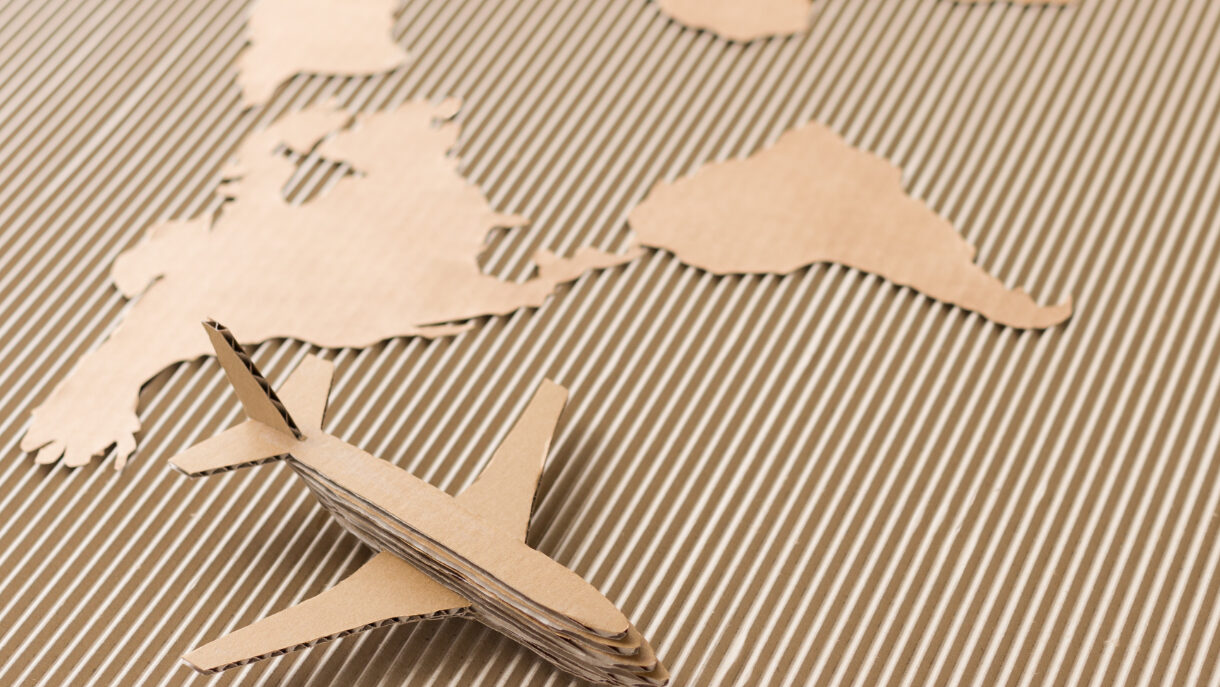Impact of packaging on environmental pollution in air transport

According to data from the International Air Carrier Association (IATA), aircraft transport $6 billion worth of goods during the year, or nearly 35% of global trade. Transport… well, in what?
Most often, heavy metal, wooden or plastic containers are used, in which products go on board the aircraft. Unfortunately, these solutions leave behind a carbon footprint, which companies can reduce, however, thanks to the use of environmentally friendly replacements – lightweight corrugated and solid board containers.
Packaging weight and CO2 emissions – the weight that presses the planet
The high weight of packaging used to protect goods in air transport increases CO2 emissions. Wooden or metal containers are even several times heavier than their modern, eco-friendly cardboard counterparts. As a result, the gross weight of the load increases, which in turn not only translates into higher transport costs, but above all increases CO2 emissions, negatively affecting the environment.
How many kilograms can companies “save”?
By using modern, green alternatives, companies can significantly reduce their environmental transport costs. Changing the wooden crate to cardboard allows you to minimize the weight of the load by up to 130 kg!
The wooden crate measuring 2250x740x1114 mm weighs 180 kg, while its durable suitable solid and corrugated cardboard only 50 kg. In the case of cardboard containers, environmental savings occur not only in the form of kilograms, but also during the subsequent disposal process. The material from which the crates are made is 100% recyclable: so it does not turn into waste, but can be reused. In this way, the life cycle of the product is extended, and no further kilograms of garbage enter the ecosystem.
Business choices and climate change
Climate change is the result of decisions taken over the years by entrepreneurs. The group of the 20 largest companies is responsible for one third of the world’s carbon emissions, and responsibility for emissions is responsible for climate change.
Since the 1990s, we have emitted as much CO2 as we have in the previous 240 years. Not only should entrepreneurs, but even have a duty to make changes to their company’s activities to reduce their ecological footprint. Consumers are already starting to account for them.
Corporate social responsibility in the eyes of consumers
Public awareness of ecology and environmental change is making consumers increasingly aware of the planet-friendly ethical behaviour of businesses. Reducing plastic, recyclable packaging, CO2 emissions, the quality of goods and where they are produced are just some of the important things for customers to make purchasing decisions on.
Responsible entrepreneurs are responsible for the social responsibility of business. Those who are aware that their choices can have a real impact on the state of the environment and thus the quality of life. More and more consumers understand the need for change and are looking for companies that are taking action to reduce resource consumption.
This could be changing heavy, wooden or metal containers to lightweight cardboard crates, using biodegradable materials or producing goods that can then be recycled. There are many alternatives to existing, harmful solutions. Just start using them.
At Amazepack, we use new technologies to help entrepreneurs make environmentally beneficial changes. Lightweight solid and corrugated containers reduce the gross weight of the load, thereby reducing CO2 emissions. It is an environmentally friendly solution that contributes to improving not only the corporate image and budget, but above all the environment.
